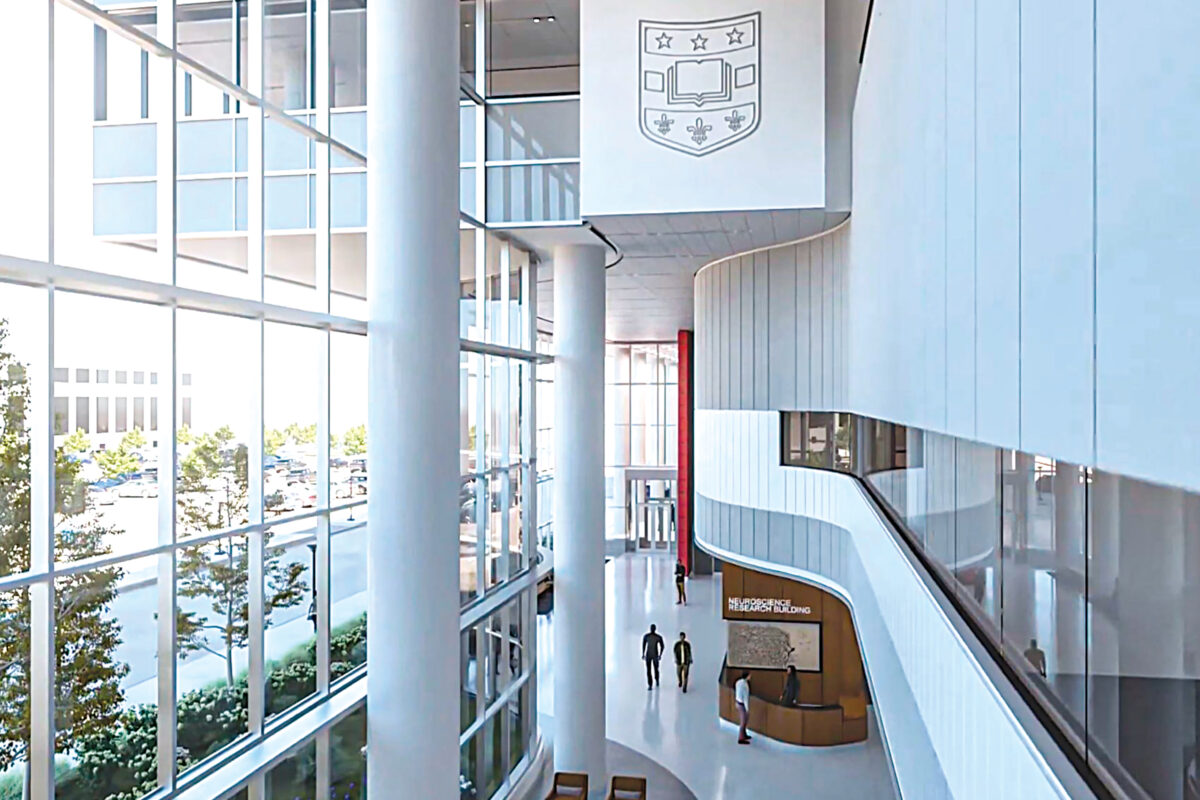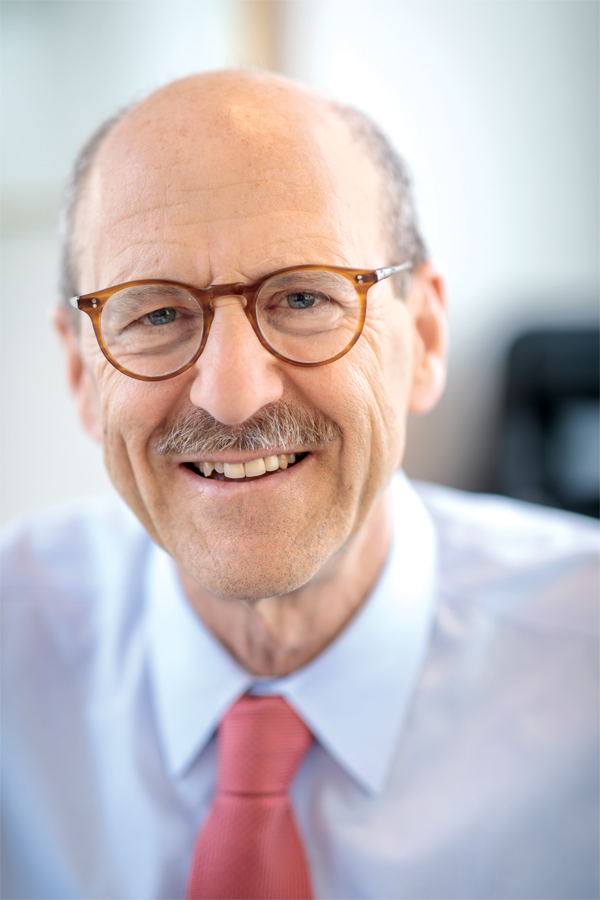
Through the power of science and discovery, WashU Medicine is dedicated to unlocking mysteries of the brain, tackling some of the most intractable problems confronting us today and alleviating human suffering.
The new Neuroscience Research Building, which opened in August, is the latest signal of this commitment, providing advanced, collaborative spaces where researchers will probe the frontiers of brain function and develop innovative therapies for a spectrum of neurological disorders.
In this Q&A, David H. Perlmutter, MD, executive vice chancellor for medical affairs, the George and Carol Bauer Dean of the School of Medicine and the Spencer T. and Ann W. Olin Distinguished Professor, outlines his vision for neurosciences at the school.
‘A virtuous cycle’

Perlmutter begins by explaining the “virtuous cycle of academic medicine” as a paradigm for how the school’s missions of patient care, education and research are inextricably linked. In this cycle, the school invests in education and research to improve clinical care, patient outcomes and community health. In turn, its clinicians care for patients, identify important areas for study and bring innovations into clinical trials. Ultimately, this cycle strengthens care delivery, helping patients live longer, healthier lives.
Dean Perlmutter explains how WashU Medicine is working to translate science into treatments that will help those who are suffering from neurological or psychiatric conditions.
What was the impetus for dedicating an entire building to the neurosciences?
We are the third-largest research-intensive medical school in the U.S., and we are No. 1 in National Institutes of Health (NIH) funding for neurology research. When I think about where Washington University can have a unique, indelible impact on human health, it is in the area of the neurosciences. This is the next frontier of science, in which new technologies and a coalescence of great talent at this university can help us address human suffering.
Much of the world’s most cutting-edge neurology research is done in our labs, and so it made sense to build a hub where our brilliant scientists would have all they need to continue that work and break new ground. The building will house over 120 labs. But there’s another piece to this that’s just as critical — not just having the space to do the work, but also enabling the kind of proximity that encourages and nurtures collaboration.
Collaboration always has been, and will continue to be, a core value at WashU. We believe that the best science and the greatest improvements to human health can’t come if you’re working in silos but instead flow from conversation and collaboration between scientists and across fields and institutions. This building is going to bring together so many incredible scientists and their world-changing work into one space; conversation and cross-pollination and new ideas will be unavoidable. I’m just giddy at the thought of what will now be possible.
What kind of collaboration do you envision being made possible by this new facility?
Truly, the sky is the limit, but I’ll give you an example. Drs. (David) Holtzman, (Jeff) Gordon and (Jonathan) Kipnis recently published a paper in Science that is one of my favorites of all time. The study showed that experimental perturbations of the intestinal microbiome had an impact on tau deposition and progression of Alzheimer’s disease.
Think about that, the idea that the gut has an impact on the brain. It has enormous practical implications for new preventative approaches to the disease, and we are looking forward to how the three of them are going to build further on this framework for multiple shots on the target of Alzheimer’s. This is the kind of collaborative work that we’re hoping to foster.
How will the building’s proximity to the Cortex Innovation Community boost innovation?
One of our most important institutional initiatives over the next few years will be commercializing our discoveries, and so there is synergy in situating the building next to this 200-acre district of entrepreneurs and startup companies. We are focusing on starting more companies, licensing more technologies and developing strategic partnerships with pharmaceutical companies to identify emerging research from our labs that can lead to new therapeutics.
“Much of the world’s most cutting-edge neurology research is done in our labs, and so it made sense to build a hub where our brilliant scientists would have all they need to continue that work and break new ground.”
— David H. Perlmutter, MD
Our goal is to shepherd more of our science through the drug development process and translate it into real treatments that will help people who are suffering. The opportunities for serious impact in solving the problems of the brain and neurological function are enormous with the maturation of technology in genomic engineering, cellular reprogramming, imaging tools and computational analysis of large datasets.
This building and the labs within it are a way for WashU Medicine to deepen its impact and, through the “virtuous cycle of academic medicine,” elevate everything we are doing for our communities — locally, regionally and globally.
Published in the Winter 2023-24 issue


